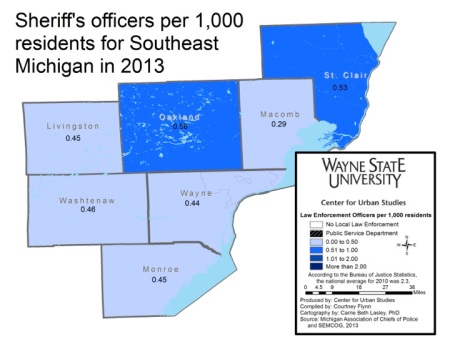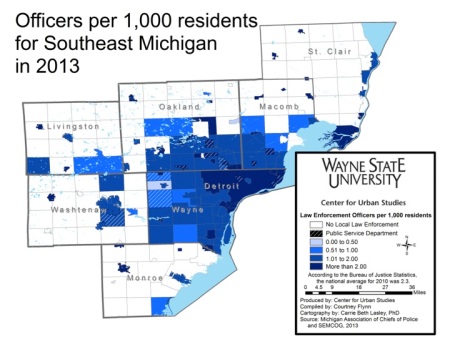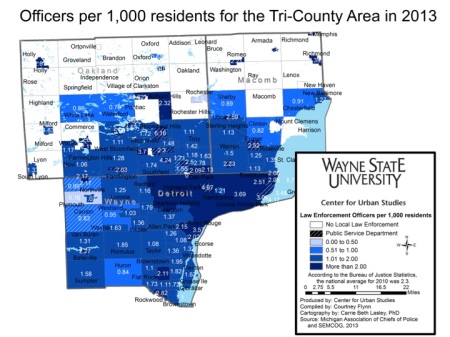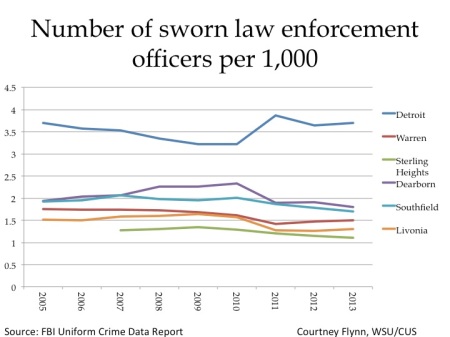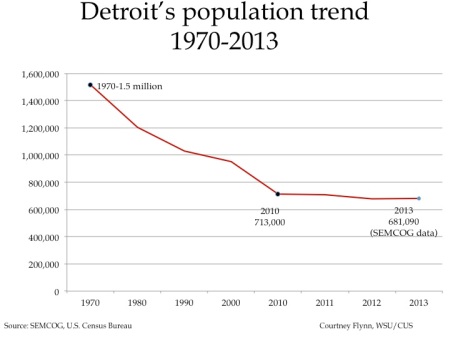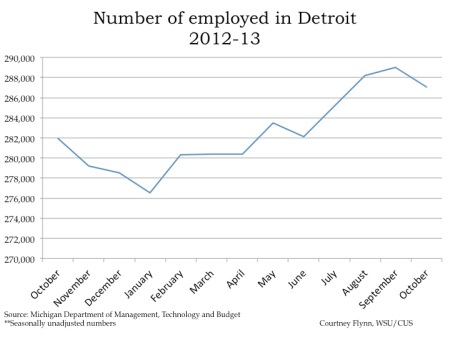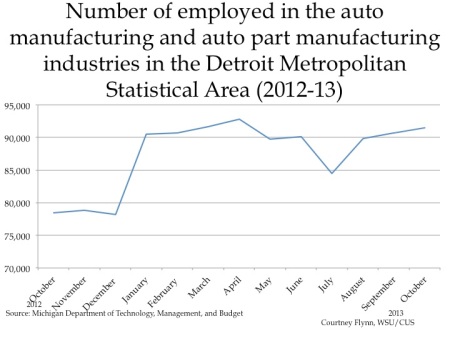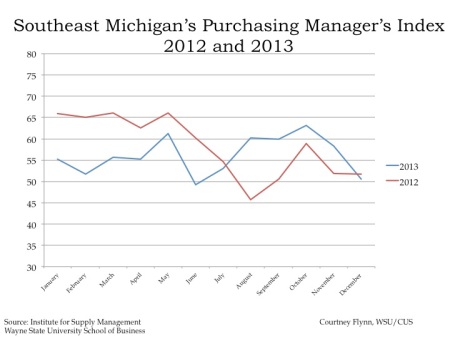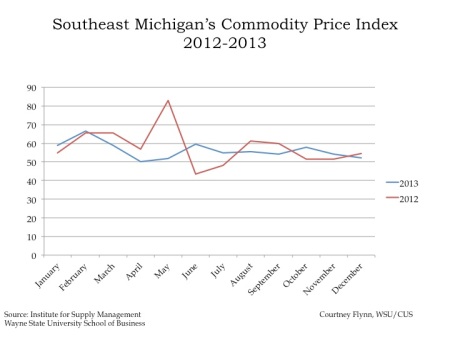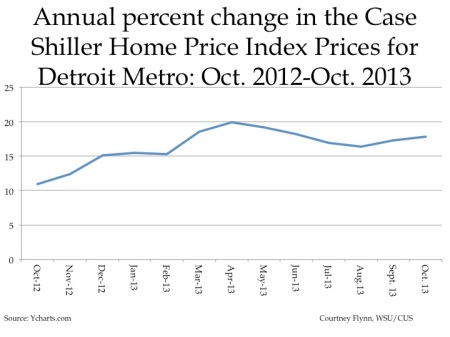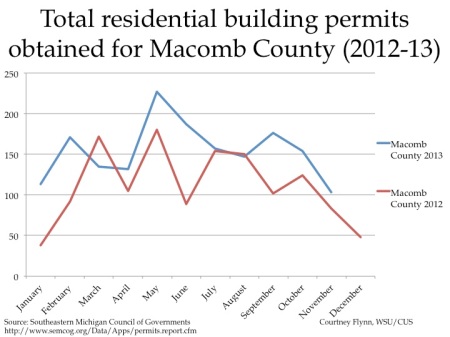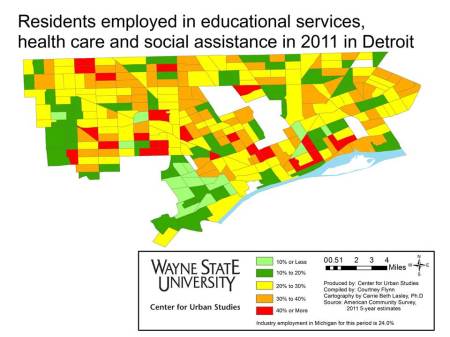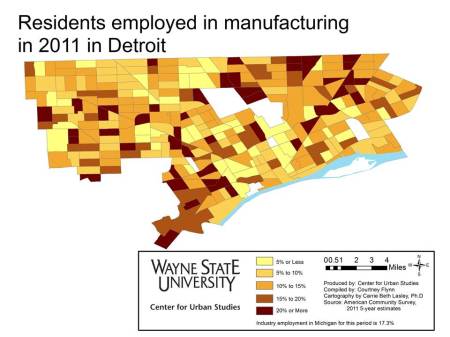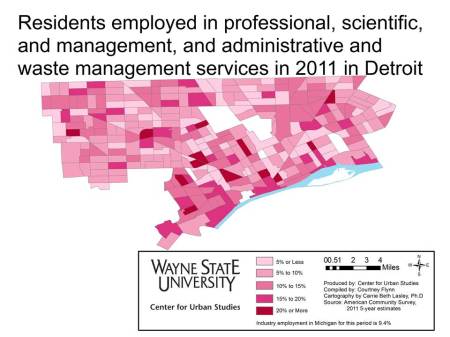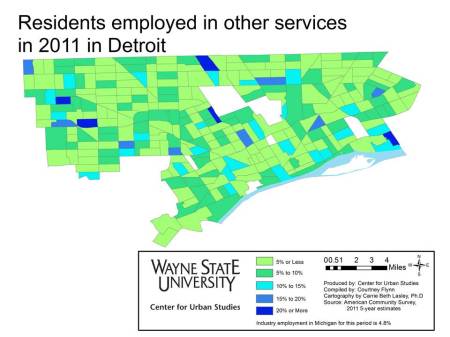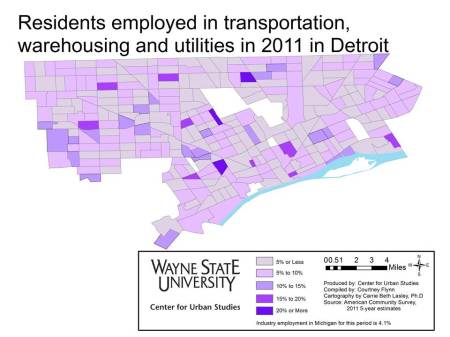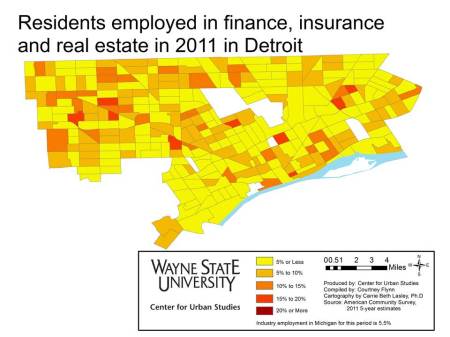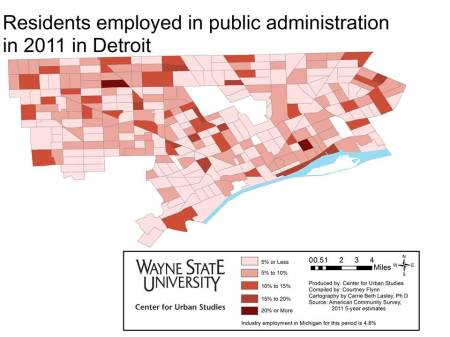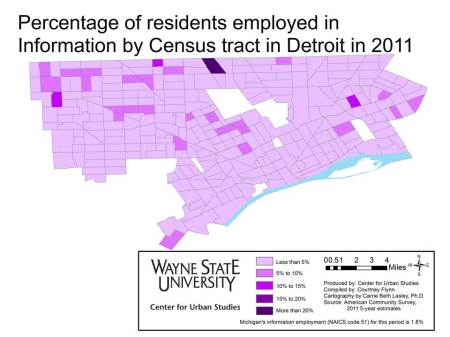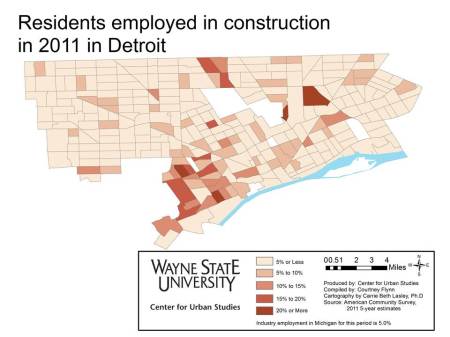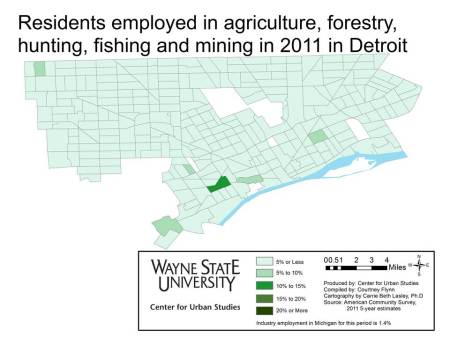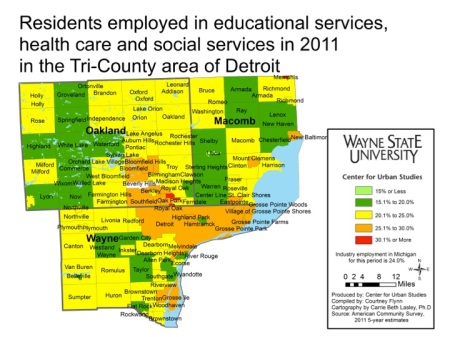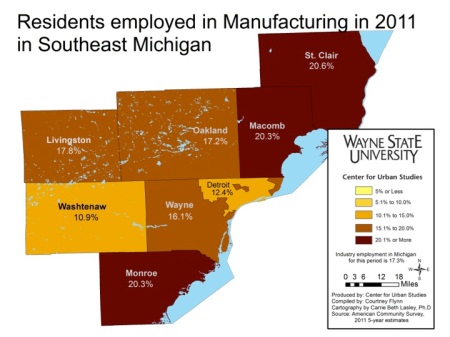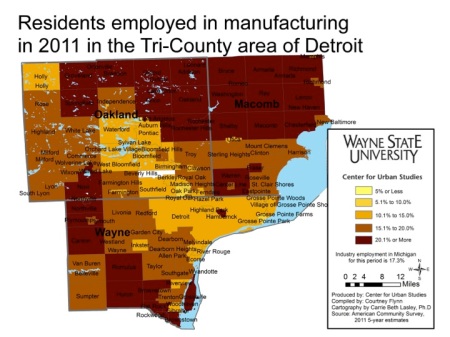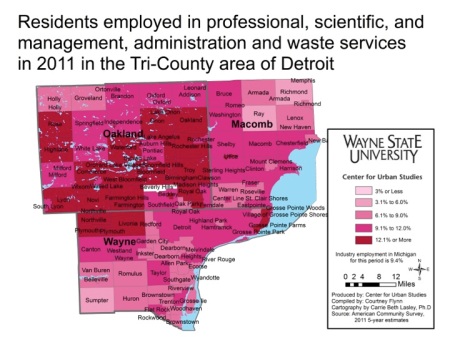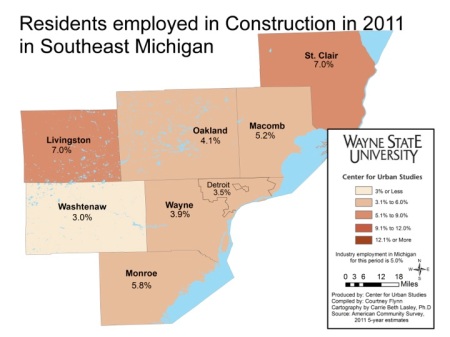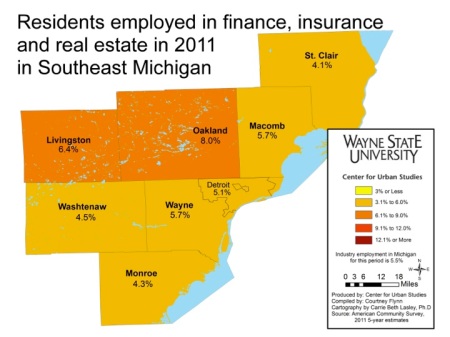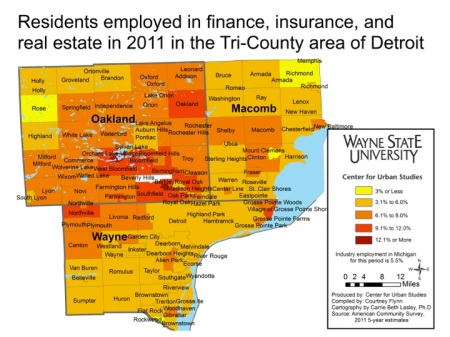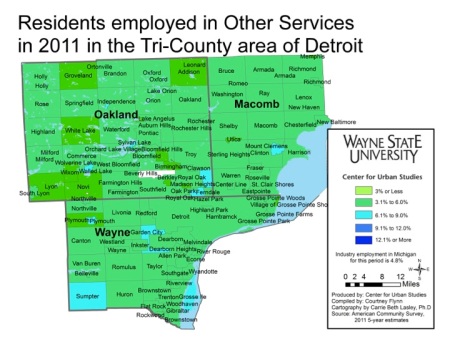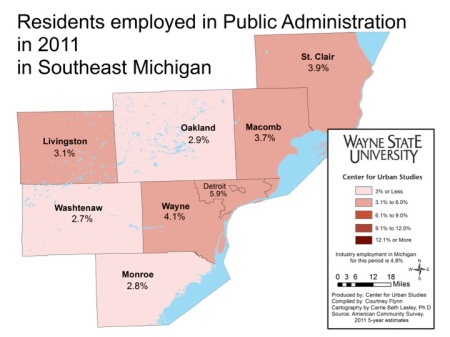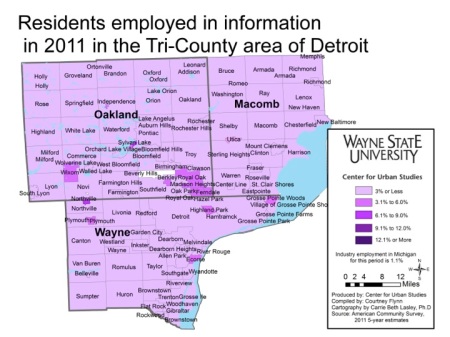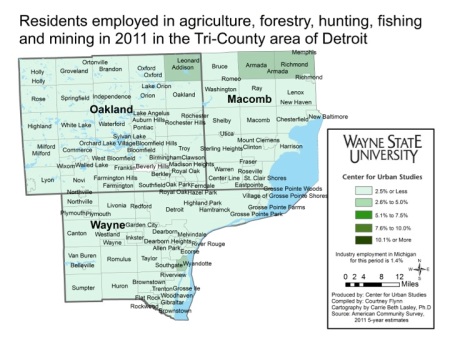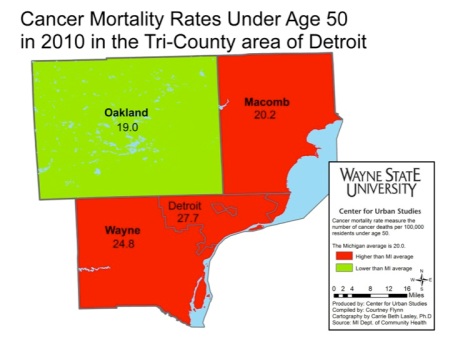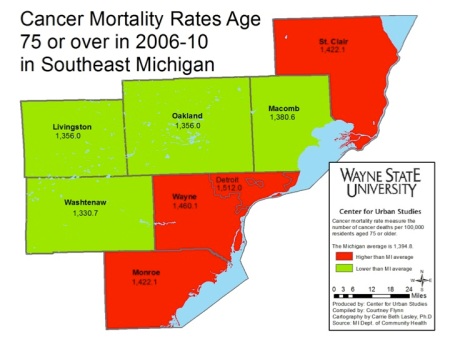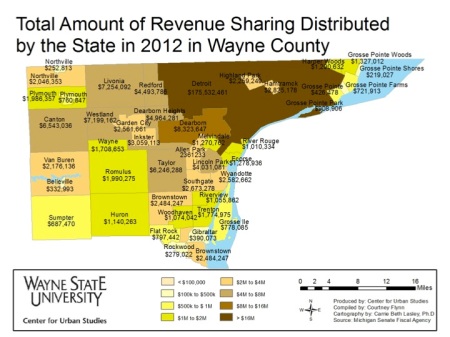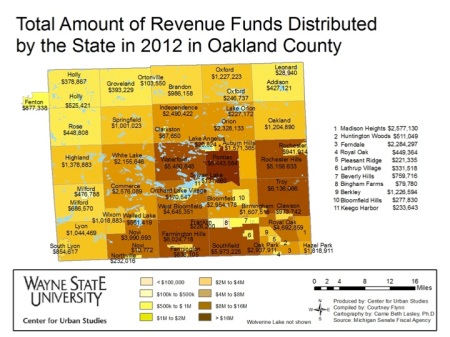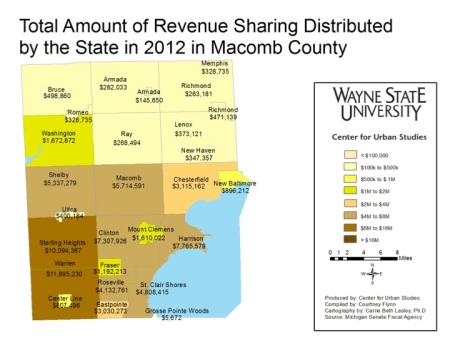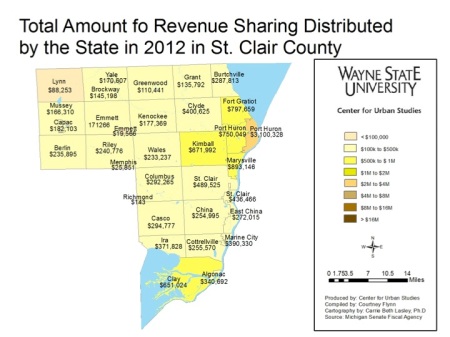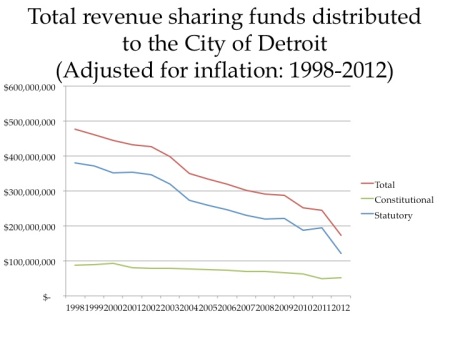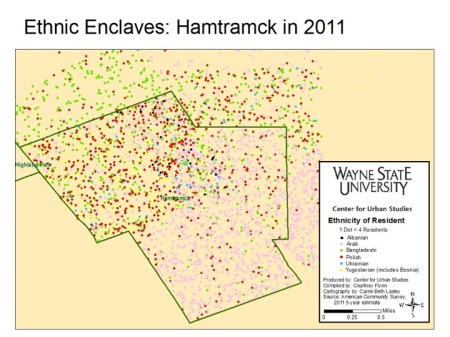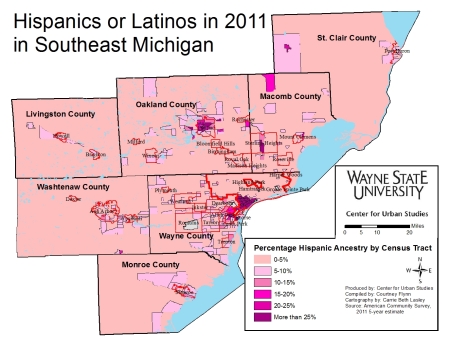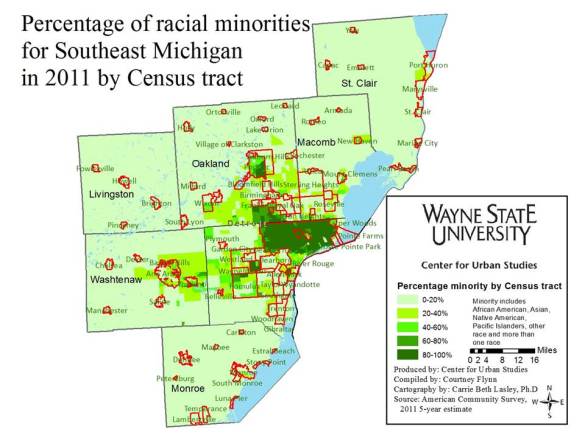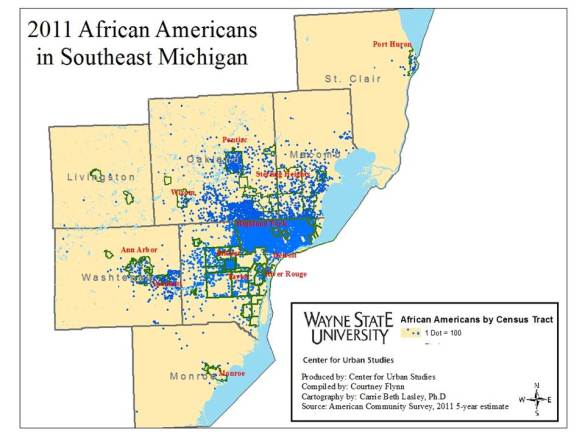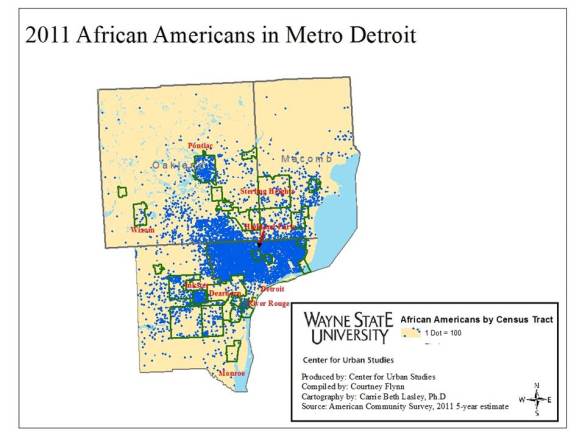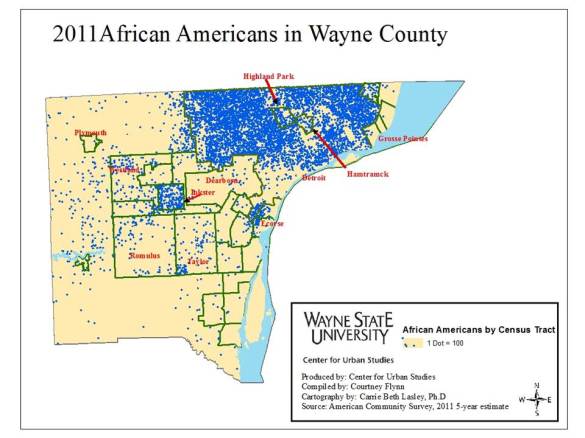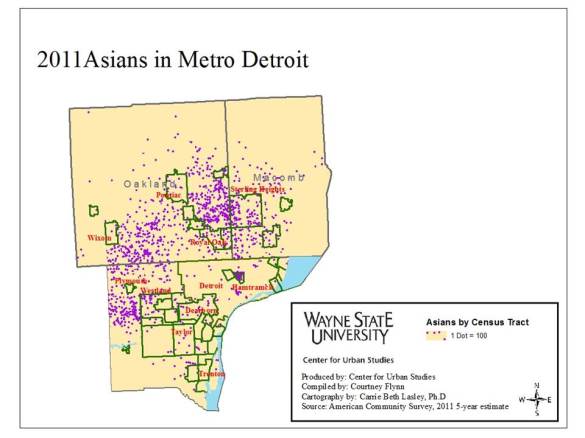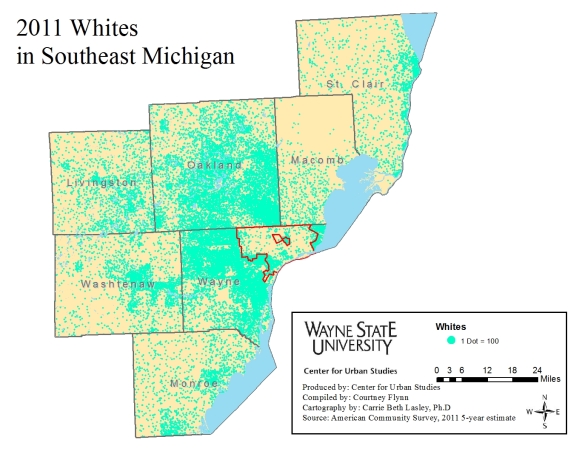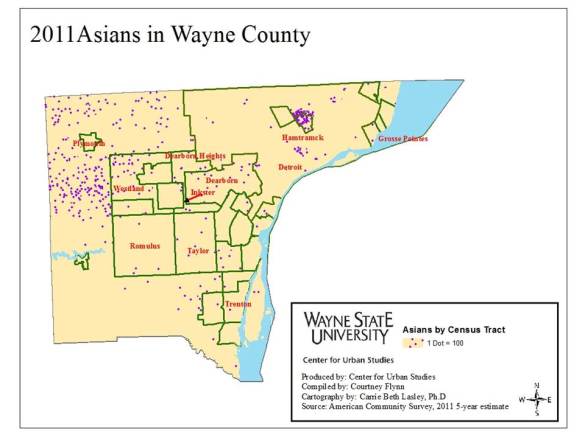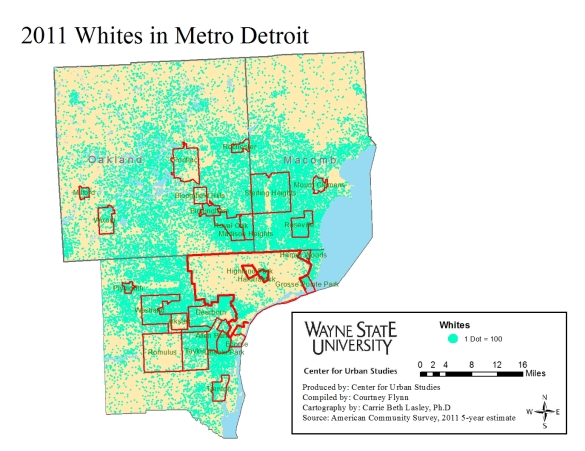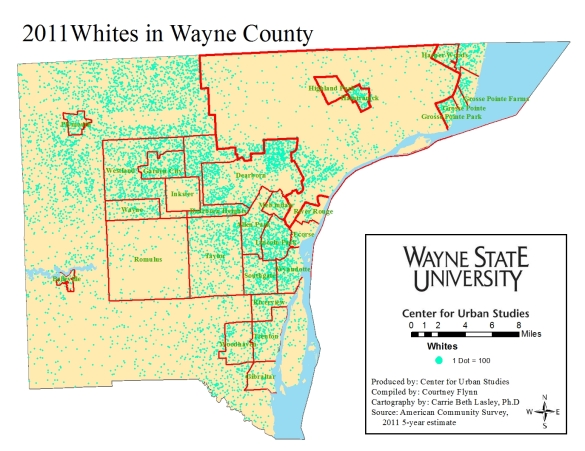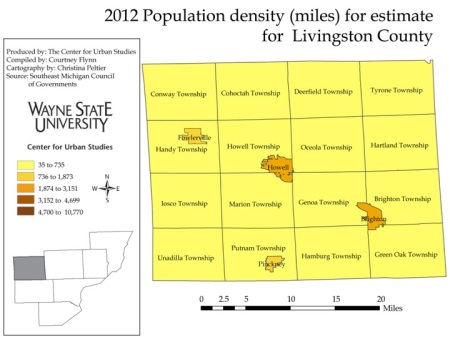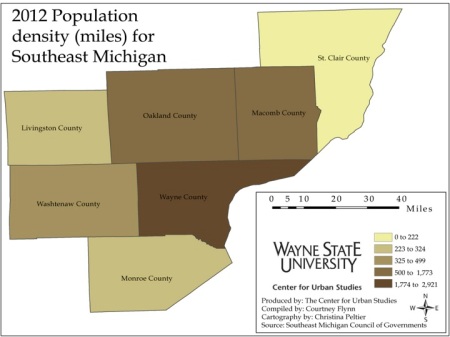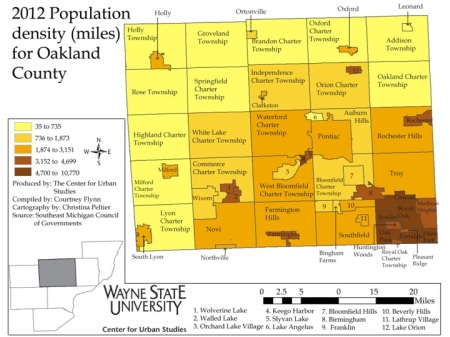In the following post, we will examine the number of sworn officers-which includes police officers, sheriff’s deputies and public safety officers-per 1,000 residents in the seven county region of Southeastern Michigan. As can be seen in the below maps, there are several municipalities that do not have their own police force. These are either patrolled by the county sheriff’s department or have a public safety department, which is comprised of both police and fire personnel.
The maps and graph below both show that the City of Detroit had one of the highest number of sworn officer per 1,000 residents of municipalities in the region. According to a local law enforcement chief, who serves on the Southeast Michigan Association of Police Chiefs, it is unofficially recommended there should be a minimum of one sworn police officer per 1,000 residents in municipalities.
The above map shows there is less than one sheriff’s deputy per 1,000 residents in every county in Southeastern Michigan. These figures were determined by taking the total number of sheriff’s deputies in each county department and dividing it by the total population of each county; these results were then multiplied by 1,000.
Oakland and St. Clair counties had the highest rates at .56 and .53 per 1,000 residents, respectively.
While no county in the region holds up to the one sworn officer per 1,000 residents standards, it should be noted that many municipalities within each county either have their own police department or pay the sheriff’s department for coverage. The county sheriff’s departments are required to cover areas with no police coverage.
The above two maps show the number of local law enforcement officers per 1,000 residents in 2013. The City of Detroit was one of 104 municipalities (out of 123) in the seven-county region to have more than one officer per 1,000 residents. In 2013 there were about 3.7 officers per 1,000 Detroit residents.
The Lake Angelus Police Department had the highest rate at about 43 officers per 1,000 residents. However, this small lakeside community only had 298 full-time residents with 13 total sworn officers. Aside from this anomaly, Lake Orion had the highest rate in 2013 with a rate of 5 sworn officers per 1,000 residents.
Within the seven county region, areas such as South Rockwood (6.3) and Yale (5.7) had well above the suggested number of officers per 1,000 residents, assuming the 1 per 1,000 is an appropriate benchmark.
Of six of the largest communities in the in Tri-County region, Detroit has consistently had the highest number of sworn officers per 1,000 residents since 2005, according to FBI data. The rate of officers in this time ranged from 3.2 to about 3.9.
In January of 2013 Interim Police Chief Chester Logan stated he was skeptical about releasing, then current, officer numbers, according to an MLive article. In the same article, Logan also said the city had 40 percent fewer officers at the beginning of 2013 than 10 years prior. While this statistic has since been widely used throughout the media, it also caused some to dig deeper into the operations of the department.
In an August 2013 article produced by the Mackinac Center for Public Policy, confusion over the deployment of Detroit’s patrol officers were brought to light. For example, city officials were quoted in August of 2013 as saying 33 percent of the entire department in 2012 were involved in policing and the rest performed administrative functions. Police officials were quoted, however, as saying that 68 percent of the department was involved in policing in 2012.A report conducted by the Emergency Manager’s Office in the summer of 2013 concluded the discrepancy could not be resolved, according to the article.
While the discrepancy over the use of police has not been resolved, it should be noted the Detroit Police Department has benefited from several grants in recent years. For example, in September 2013 the federal government announced it was providing the City of Detroit with $1.8 million to help pay for 10 police officers. Other grants awarded to the city helped with purchasing new technology for the police department and violence prevention programs.
In 2011, all the above police departments experienced a decrease in the rate of officers per 1,000 residents, with the exception of Detroit. In 2010 the City of Detroit had 3.2 officers per 1,000 residents and in 2011 it had 3.8. Detroit’s rate increase though was not reflective of an increase in the number of officers, but a decline in the population. This is true for all police departments, except for Warren, from 2010 to 2013 in the above chart.
Since 2011, Warren and Livonia have experienced a rate increase. The two cities have been able to sustain their police forces, and increase their officer to population ratio, through increased taxes and department reorganizations. In August of 2012 Warren voters approved a police and fire service millage. Also in 2012 the City of Livonia continued to reorganize its police department, which brought in additional non-officers to perform administrative duties so more patrol officers could be on the street.
Sterling Heights (data wasn’t available for 2005 and 2006) had the lowest rates, ranging from about 1.1 to 1.3. Although Sterling Heights began to lose officers when the recession began in 2008, because property values were declining, residents approved a millage in 2013 to support the police and fire departments. This millage approval allowed the Sterling Heights Police Department to keep 45 officers on staff that were initially slated to be laid off.
